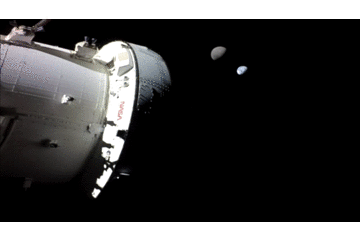The Moonshot’s ultimate test
It’s all about reentry and the heat shield- anxiety or excitement?
We are about to learn if the spacecraft that will take Americans back to the Moon can pass its most important test. The Orion capsule that is part of the Artemis 1 mission is now traveling back to Earth from its orbit around the Moon.
The critical part of this mission is reentry into Earth’s atmosphere. It is the number one primary objective of this test flight.
NASA executives will learn if the heat shield will protect the capsule from the 5,000 degree Fahrenheit (about half as hot as the Sun) trip through the atmosphere. There will be several anxious moments, including a communication blackout, as Orion returns as one of the fastest human-rated spacecraft. It will be traveling at 25,0000 mph, or Mach 32. If the heat shield doesn’t work, America is not going back to the Moon anytime soon. That’s why this part of the mission is so important.
One might think NASA is a bit anxious about this return on Sunday. Anxious is not the word that one of the engineers who has been working on this heat shield for more than 15 years would use. “I'm highly confident that it's going to work. I'm more excited than anything else,” Jeremy Vander Kam told me. Vander Kam is the Deputy Thermal Protection System Manager for Orion. He started working on the capsule in 2006.
The Orion heat shield is different from the tiles that were used on the space shuttles. Orion’s shield, like Apollo’s, is made of an ablative material. It burns away during reentry to dissipate all that heat. Orion’s heat shield is so big, five meters in diameter, that it is made of blocks of material. The gaps between those sections are filled with adhesive. “These blocks of ablative material for a lunar return class vehicle is something that's never been done before,” Vander Kam says.
The full heat shield could not be tested on Earth. Only a section of a block, about the size of a hockey puck, was hit with 5,000 degrees. Orion has reentered the atmosphere from a low earth orbit during an earlier test flight. But not at the speed it will be traveling at on Sunday.




The concern for the engineers is that the heat shield burns off smoothly. If not, what’s called local heating augmentation can occur. “That's really the crux, the importance of this flight test, to prove that we have done the appropriate testing, done all the analytical modeling to show that that won't happen,” says Vander Kam.
Orion is coming in so fast from the Moon that NASA plans what is called a skip reentry. The capsule will hit the atmosphere traveling about 25,000 mph. It will lose some altitude. The spacecraft will then rotate, which will create aerodynamic lift. Orion will gain some altitude as it “skips” back into space. It will start falling toward earth again. But it will have slowed to 17,500 mph, which is the speed that low earth spacecraft reenter the atmosphere.
Like all reentries there will be a communications blackout period. I asked Vander Kam, who will be on the recovery ship, when he will be able to exhale, realizing the heat shield worked. “I actually have a very special opportunity to make that exhale being on the ship. We will actually hear the sonic boom of that vehicle coming in after it's exited the blackout. That'll be the first sort of de facto sign that yes, in fact that the heat shield did its work because the vehicle is there and intact to make the sonic boom. I'm looking forward to that,” he said.
NASA is taking great pains to recover Orion without damaging the remaining heat shield. Vander Kam will be on the ship to get the first look at how the shield looks. It is filled with sensors that will provide data that could help improve the design before Artemis 2 with four astronauts on board.
There is a lot riding on this heat shield, and on the shoulders Vander Kam and his team. “This is why I, and why those on our team, have come to NASA. To do these things, to do these hard things. To be asked to put together these critical systems. It's been such an honor,” he told me.
Vander Kam not only is excited about the heat shield he’s worked on. He says the goal of the Artemis program is an important driver for him.
“One of the goals of the Artemis program in general is to return humans to the Moon, and specifically to put the first person of color and the first woman on the moon. And that's something that really speaks strongly to me. You know, I've gone through my life in my career with certain privileges because of who I am. And it's good to be a part of something that can elevate those who haven't had that same privilege in the past. So I'm really proud of that part of this.”
A video version and conversation with Vander Kam is here.










Hey Space Man, finally able to sign in. I was beginning to have withdrawal of your fantastic updates and great articles! This one on the reentry of Artemis is excellent. Here's a legitimate question. Why is such a steep reentry necessary. Can they not calculate for a less severe angle to reduce the heat impact? Just curious.